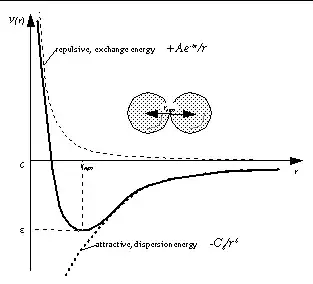I think this question needs to be asked very carefully to get a precise answer. But, the zeroth order answer should be clear: the photon has no electric charge or magnetic moment, so it will neither attract nor repel another electric charge.
One interpretation of this question, given in the comments to another answer, is to ask about the trajectory of a photon passing near an atom.
Well, in fact, even here we need to be careful. When I hear "trajectory" I think of a one dimensional line moving through space; and it makes sense to think of the impact parameter (distance of closest approach) of such a line with an atom. But an EM wave, or a photon wavepacket, is not (generally) of this form.
If the EM wavelength (1 over the photon momentum) is larger than the size of the atom, then the atom will look approximately like a point particle, compared to a traveling plane wave. First, note there is no useful sense in which we can think of the EM wave / photon as having a 1 dimensional trajectory and ask for its distance with respect to an atom in this limit. We should think of a wave extending over space, scattering off of a point source. This is the limit where we expect more or less elastic scattering to apply. There is an interaction, but we describe this interaction in terms of the scattered wave produced at infinity, and not a trajectory.
If the EM wavelength (1 over the photon momentum) is smaller than the size of the atom, then we can think of a trajectory, if we imagine building a wavepacket of high energy radiation. But in this limit, where by definition the photon has a larger energy than the binding energy of the atom, we certainly do not expect an elastic scattering process to occur. Instead, the EM radiation will be absorbed by the atom and re-emitted with a different energy with some probability, or possibly even ionize the atom. If the photon is super-well localized and not on a collision course with the atom, it will have a small probability to interact; the trajectory won't be "dragged toward" or "pushed away from" the atom.
Another possible interpretation of this question is whether one can derive an "effective potential" analogous to the Coulomb potential for photon-charged particle interactions. To address this, one should remember that how Coulomb potential can be derived from quantum field theory: one starts with the full relativistic scattering amplitude, takes the non-relativistic limit, and matches with the scattering amplitude with a potential in non-relativistic quantum mechanics. The problem is that there is no way to take the non-relativistic limit for a photon.
One could ask what happens with a massive, neutral particle -- say a neutron, or imagine the photon really did have a tiny mass. In this case, you can go through the above exercise. You will find that neutral particles will have a zero effective potential in the non-relativistic limit.
